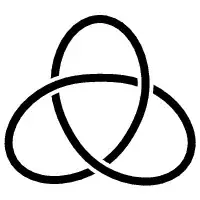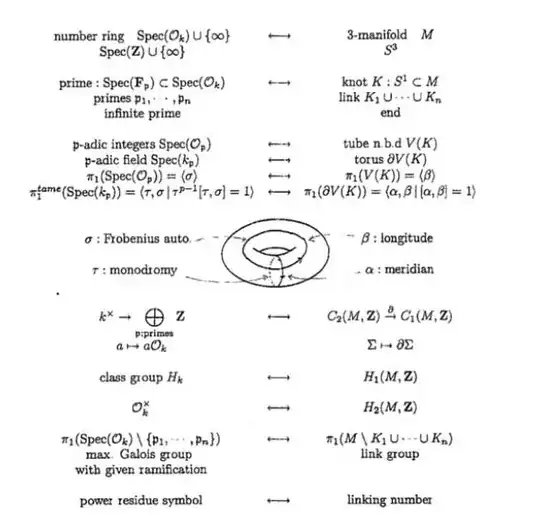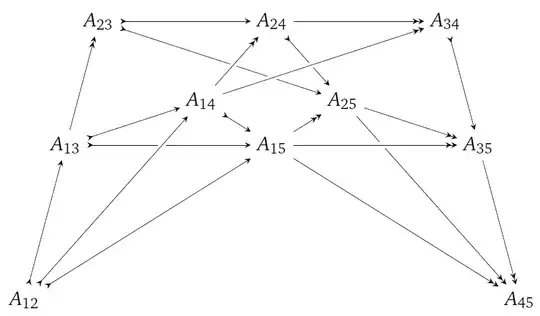We all know how the limiting Fibonacci ratio $(1+\sqrt5)/2$ is tied in with the geometry and construction of the regular pentagon. But what about the connection between the neusis construction of the regular hendecagon and the tribonacci constant, the latter defined as the limiting ratio of the sequence $1,1,1,3,5,9,17,\ldots$ (each term after the third is the sum of the previous three)? It turns out that the tribonacci constant is connected with the cosines of the hendecagonal angles via the Gauss sum.
Neusis construction of the regular hendecagon
We begin with the existence of the referenced neusis construction. The neusis constructibility of regular $n$-gons is guaranteed by the existence of a (or many) neusis trisection of an angle, if the Euler totient function of $n$ has no prime factors greater than $3$. Now, $11$ is the smallest natural number failing to meet this criterion, as its Euler totient is a multiple of $5$. However, Benjamin and Snyder[1] demonstrate a neusis construction for the regular hendecagon. In the method they present, the solubility of a quintic equation to determine parameters that can be put into a neusis construction depends on a resolving seventh-degree equation, which seems to be a step backwards. However, for the specific quintic equation for $2\cos(2k\pi/11)$ with $k\not\equiv0\bmod 11$:
$$x^5+x^4-4x^3-3x^2+3x+1=0$$
"a miracle occurs"; the seventh-degree equation is reducible and the required equation is reduced to a cubic factor, rendered in the work as
$$u^3+2u^2+2u+2=0.$$
This root of a cubic equation is neusis constructible, and the parameters required to retrieve the regular hendecagon are derived in terms of this root.
The above cubic equation is not the tribonacci ratio equation, which is instead
$$t^3-t^2-t-1=0;$$
but it turns out that $t=-1/(1+u)$ and the distance from the pole of the neusis to the catch line for one of the marks may be rendered as $1/t(=-(1+u))$. So where might the tribonacci ratio have come from in this solution of a seemingly unrelated quintic equation?
The 11th-order Gauss sum
If you are familiar with quadratic Gauss sums, you have probably seen the result
$$\sin(2\pi/11)-\sin(4\pi/11)+\sin(6\pi/11)+\sin(8\pi/11)+\sin(10\pi/11)=\sqrt{11}/2,$$
which is just the imaginary part of the quadratic sum with eleventh roots of unity. In a rather common homework problem in this area, the above sum is multiplied through by $\cos(8\pi/11)$, various manipulations are made with the trigonometric sum-product relations, then the multiplier $\cos(8\pi/11)$ is divided back out to get the sine-tangent relation
$$4\sin(2\pi/11)-\tan(8\pi/11)=\sqrt{11}$$
or something similar. We could have just as well used the multiplier $\cos(2k\pi/11)$ for any $k\in\{1,2,3,4,5\}$ to get a group of five of these relations which may be symmetrically expressed as
$$4\sin(6k\pi/11)-\tan(2k\pi/11)=(k\mid11)\sqrt{11}$$
where $(k\mid11)$ is the Legendre symbol of residue $k\bmod11$. This applies for all integers $k$, including $0$ (which trivially gives $0=0$).
The tribonacci constant emerges from the Gauss sum
Suppose we square the above symmetric relation and render $x=2\cos(2k\pi/11)$, the quintic roots for which we (and Benjamin and Snyder) intended to solve. We can use multiple-angle trigonometric formulae and the Pythagorean relation $\sin^2\theta+\cos^2\theta=1$ to obtain a rational-function equation for $x$, from which fractions may be cleared to obtain a polynomial equation. The net result, however, isn't the quintic equation we expect but an octic one:
$$x^8-6x^6-x^5+9x^4+5x^3-x^2-4x-1=0.$$
What happened to the quintic equation for the trigonometric roots? It's actually there, as a factor of the octic. And guess what the complementary cubic factor is:
$$(x^5+x^4-4x^3-3x^2+3x+1)\color{blue}{(x^3-x^2-x-1)}=0.$$
So the cubic factor found by Benjamin and Snyder, which enables the neusis construction of the regular hendecagon, is not entirely an accident. In the form of the tribonacci constant, and therefore one of the distance parameters in Benjamin and Snyder's construction, it is adjoined to the quintic roots through the Gauss sum!
Reference
- E. BENJAMIN and C. SNYDER (2014). On the construction of the regular hendecagon by marked ruler and compass . Mathematical Proceedings of the Cambridge Philosophical Society, 156, pp 409-424 doi:10.1017/S0305004113000753


